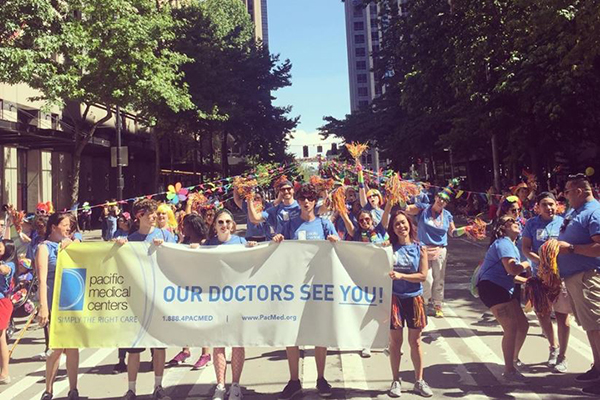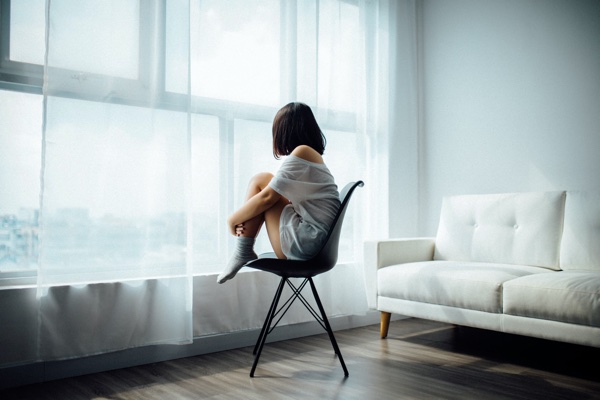Outdoor exercise during COVID-19
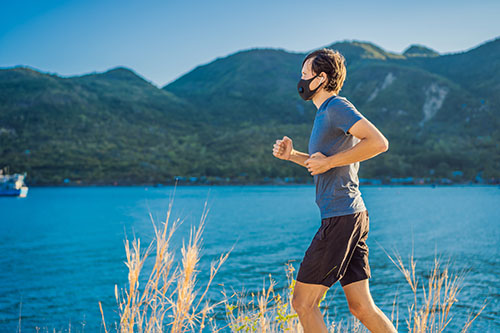 Are you confused about getting outside for exercise during this trying time of COVID-19? If so, you’re not alone. Like so much about the current situation, the advice about exercise right now can be confusing.
Are you confused about getting outside for exercise during this trying time of COVID-19? If so, you’re not alone. Like so much about the current situation, the advice about exercise right now can be confusing.
As a sports medicine specialist, I like to think physical activity is an elixir for better health and should be prescribed to most everyone. It’s one of the most effective treatments for multiple health issues (like cardiovascular disease, hypertension, depression, obesity, diabetes and others), and even moderate exercise has been shown to boost the immune system. Exercise is a medical prescription everyone should follow. However, the long-term benefits of exercise need to be pursued while also being smart about the serious risks of exposure to the virus.
As part of our state’s Stay Home, Stay Healthy order, many businesses including gyms are closed. Therefore, exercise needs to be done at home or outside. Yet, many options are unavailable—like parks, beaches and hiking trails that are closed to facilitate social distancing. In addition, the WHO and CDC are now recommending universal wearing of masks when leaving your home, but a mask can make exercise more difficult. All of this information can be hard to sort through.
So how do we exercise—while exercising caution—during the current public health crisis?
Is it safe to exercise outside?
Let’s start with what we know. We know that the virus that causes COVID-19 is spread through droplets released by infected people, such as when they sneeze or cough—and possibly even when talking or breathing. We know these droplets can hang in the air, especially in enclosed spaces. We also know people breathe more deeply during aerobic exercise. A person who is infected may have no symptoms and not know they are contagious. For these reasons, it is of the utmost importance to keep your distance from people you don’t live with—both to protect yourself and to help flatten the curve.
There is also much we do not know yet—but we can apply some common sense. When virus-carrying droplets occur outdoors, it is reasonable to think the concentration will be lower due to the open space. It is possible this would make the “viral dose” you might be exposed to less dangerous. You can lower your risk outdoors even more by maintaining a social distance of greater than 6 feet. One white paper (not yet peer reviewed) recommends staying out of the direct path or lane of people exercising 30-60 feet away, to avoid catching particles in their slipstream.
If you are running, walking or cycling, there is a risk of moving through a coronavirus droplet cloud—however, my assessment is this risk is small overall, so long as you follow the social distancing rules and avoid crowded areas. My recommendation for safety is to maintain a distance greater than 6 feet if you or others are running or cycling outdoors.
Do you need to wear a mask when exercising outside?
If you can use a mask when exercising outdoors, it too would help minimize your overall risk. However, I don’t believe it is absolutely necessary, and it may be difficult to do when exercising heavily. The CDC has information on wearing a cloth mask to slow the spread of COVID-19.
Remember, a cloth or paper mask plays the same role as covering your cough or sneeze: it protects those around you. And since any one of us may be infected with the coronavirus and not have symptoms, wearing a mask when exercising near others can help slow the spread of this disease.
Key takeaways. The risks of exercising outside can be minimized if you follow some guidelines:
- Avoid crowded areas.
- Head outside during slower times. Depending on your area, these may be early morning, during the day when others may be inside working, or in the dinner hour or evening.
- Cover your mouth and nose with a light mask, if feasible, while you exercise.
- For vigorous workouts, try cooler hours, when a mask might be more comfortable (or perhaps unnecessary, if fewer people are out).
- Keep your distance from others. Aim for more than 6 feet if you are walking, running, climbing stairs or cycling, or around others who are pursuing such activities.
- Avoid touching your face during your workout.
- When you return home, take off your gear/clothes and wash your hands thoroughly before touching your face.
- Avoid touching household items (knobs, counters, fridge door, etc.) until you have cleaned your hands.
- If you wear a cloth mask, clean it in a washing machine regularly.
There is risk in life and everyone needs to decide how much they are willing to accept. I think exercise is an important part of life, and while exercising outside has risks, these can be minimized.
I wish you the best in finding ways to maintain your health through exercise, while also taking precautions that make sense.
Chris Maeda, MD, practices sports medicine at Pacific Medical Centers. He sees patients at the PacMed clinics in Beacon Hill, Northgate, Canyon Park (Bothell) and Totem Lake. To schedule an appointment with Dr. Maeda, please call 1.888.472.2633.
Let us know if these tips helped you at StayHealthy@pacmed.org. Read more about PacMed’s response to COVID-19.
Mental health during social distancing
Addressing Mental Health During Social Distancing
As published in 425 Magazine on April 10, 2020
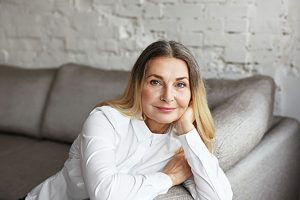 With all the additional stresses associated with the COVID-19 pandemic—financial, relational, and more—building habits and strategies to help mental health is important. Alex Majcher, a member of the Behavioral Medicine team at Pacific Medical Centers at its Federal Way clinic, spoke about how to build some of these strategies: what to include in your routine, what to avoid, and how to try to make the best out of an extremely difficult collective situation.
With all the additional stresses associated with the COVID-19 pandemic—financial, relational, and more—building habits and strategies to help mental health is important. Alex Majcher, a member of the Behavioral Medicine team at Pacific Medical Centers at its Federal Way clinic, spoke about how to build some of these strategies: what to include in your routine, what to avoid, and how to try to make the best out of an extremely difficult collective situation.
What are some tips on balancing news intake in a way that doesn’t heighten anxiety?
You should limit the amount of time each day you watch or listen to the news. Don’t leave it on all day as background noise, and don’t watch first thing in the morning or right before bed. If you get your news by reading it on your phone, the same applies; don’t open up your news app as soon as you wake up, and don’t read it in bed trying to fall asleep.
Additionally, if you struggle with anxiety around the news, focus on local outlets. Local news tends to present more succinct information rather than having panels that mix in a lot of emotionally charged opinions. This also helps you to focus on what is happening in your reality and can prevent you from feeling overwhelmed by what is happening all over the world.
What are proactive steps to take to ensure you’re being mindful of your mental health during social distancing?
If you are working from home, it is important to keep a routine similar to what you would have if you were still going to your office. Ensure that you’re maintaining a regular sleep schedule. When you get up in the morning, do all of the things you would have done on a regular day: take a shower, have your morning coffee and/or breakfast, get dressed, etc.
You also can try and find safe ways to help others. As social beings, we have the instinct to contribute to the well-being of the group, which is why it feels good to contribute to others’ well-being. During social distancing, this doesn’t need to go away—there are numerous ways to help others. Reach out to people who may be lonely by phone, or teach someone who doesn’t know how to set up and use social media so they can connect with others as well.
Additional proactive steps include:
- Do things that give you the opportunity to feel like you have achieved something, no matter how small it may seem. Do a project you’ve been meaning to complete at home, finish a puzzle, learn a new hobby or skill. Set a (realistic) goal for each day and work toward it.
- Make a list of things you can do at home that you enjoy, and schedule a time for them throughout your day.
- It doesn’t have to be intense, but get moving: a walk around the block or yoga will do.
- Spend a little bit of time outside each day, no exercise required! This will help prevent feelings of being boxed in or restless, which is common for people to feel these days.
What are the possible impacts of social isolation for those that live alone?
For those who live alone, social isolation can be difficult to experience. When you live alone, you’re already lacking a source of social support. A lot of people have a “work family” and are used to experiencing interaction outside of the home. This change can result in increased loneliness and boredom relative to people who live with roommates or family members.
Everyone’s anxiety is heightened now because of the pandemic and the impacts on their lives due to social distancing. People are concerned about their health and the health of their loved ones, and are afraid for their jobs and financial well-being. There is a lot to be anxious about right now, and being alone can exacerbate the anxiety because it’s easy to get stuck in those thoughts and worries.
All of the things listed above are risk factors for depression. Additionally, financial challenges also are contributing more to this concern for those living alone because they don’t have another person contributing to household expenses. Other symptoms include feeling unmotivated, thoughts of harming yourself or death, feelings of worthlessness or hopelessness, and fatigue. I recommend you seek medical attention right away if you are experiencing any severe symptoms.
What are the ways social distancing might actually be beneficial to mental health?
During this time of social distancing, it gives us time to recharge, and to take time out from our busy and/or regimented lives, allowing us to get the rest we need.
This is an opportunity to form connections with people you may not have known well before because you don’t see them in your everyday life. I have spoken with people I haven’t heard from in years when they reached out because of this. We are being forced to slow down and simplify our lives and it’s an opportunity we didn’t have before.
Along those same lines, I’m sure every one of us has that one thing at home that we have been “meaning to do” but never had the time—that artwork you wanted to create, the cabinet door to fix, that book you wanted to read, or game you wanted to play with your kids: Now you have the time!
What is the importance of unwinding and taking time for yourself?
Your mental health is connected to your physical health. Taking time to relax promotes physical well-being as well as mental and emotional well-being. When you feel high stress for an extended period of time, you are at higher risk for physical illness. It’s important to take care of yourself by getting restful sleep and doing relaxing activities (i.e. reading, yoga, stretching, taking baths).
Any tips on online or remote therapy? Is it as effective/are there ways to try to make it more effective? The benefits of online and remote therapy really depend on the reason for treatment and the personality of the patient. Virtual therapy is a really great tool to reach people who are unable to access in-person therapy because of social distancing, and overall because of living in a rural area, homebound by illness or lack of transportation.
I have also found that remote treatment has been the therapy of choice for those who have high social anxiety, and in my opinion, if that is the only barrier to seeking treatment, this is a fantastic option.
Tips to get the most out of virtual therapy include:
- Video is better than the telephone, and the telephone is better than texting. I know texting for therapy may be an appealing option for people today; in my opinion, text may be good for reminders of learned/practiced skills as a supplement to in-person or virtual therapy, but not a replacement.
- Make sure when you’re talking with your therapist, you’re in a quiet environment with no external distractions. I recommend a bedroom, quiet den, or even a backyard.
Alex Majcher works on the Behavioral Medicine team at Pacific Medical Centers at its Federal Way clinic. She has received her degree from Loma Linda University in Loma Linda, CA. Her medical interests include substance abuse disorders, post traumatic stress disorder, depression, and anxiety. When not in the clinic you can find Alex soaking up live music, reading, horseback riding, and traveling.
Read more about PacMed’s response to COVID-19.
Marching with Pride
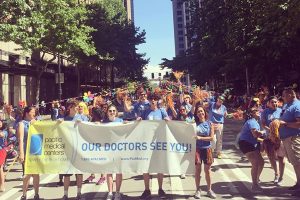 We may be physically distanced, but PacMed is still committed to marching alongside our LGBTQ patients, employees, vendors and community-at-large. Here’s how to join us, virtually, and support the full rainbow of our community.
We may be physically distanced, but PacMed is still committed to marching alongside our LGBTQ patients, employees, vendors and community-at-large. Here’s how to join us, virtually, and support the full rainbow of our community.
PacMed has been a supporter of the Seattle Pride Fest for many years. And we look forward to doing more this year! To learn about current events or future activities being developed, stay-tuned to Seattle Pride.
Pride in PacMed and our health care system
Diversity and inclusion are defining characteristics of PacMed. We asked one of our valued team members to share their thoughts about PacMed and its support of Pride:
“I have attended the Seattle Pride parade with my girlfriend for several years as part of the LGBTQ+ community. When I heard that PacMed was participating in Pride, I was very excited to volunteer! To me, PacMed’s participation shows just how inclusive, accepting, diverse and open-minded our company is. It was great to walk in the parade while representing our company and showing our support and love for the LGBTQ+ community. I would like people to know that all of us at PacMed are here for YOU, your health, your needs, however you identify. PacMed is a judgement-free zone.”
—Yessenia Puentes, CMA, Lead Medical Assistant, Pacific Medical Centers
What To Expect From a Telemedicine Appointment

One medical practice that the COVID-19 crisis has accelerated is a mainstream use of telemedicine, in which appointments are held remotely over HIPAA compliant video-conferencing tools. Though different forms of telemedicine have long been available, the practice is gaining serious momentum in a time when we’re avoiding heading to the doctor’s office unless we absolutely have to.
“While we had been planning to expand telehealth soon, it took this terrible crisis to take us from crawling to a full sprint in a matter of weeks,” said Dr. Nawal Alkharouf, a pediatric provider at Pacific Medical Centers’ Canyon Park clinic. “It was a little like building a plane while flying it, but our providers were incredibly understanding and enthusiastic. We have all been amazed at how much we can do just by talking to and seeing the patient.”
Telemedicine appointments can be used for myriad purposes, including diagnoses. Recently, Sara Montagne’s 8-year-old daughter, Phoebe, started experiencing violent stomach pain, which ended up being diagnosed as appendicitis thanks to a telemedicine appointment with her pediatrician, Dr. Alkahrouf.
“I called in and the person on the phone guided me through how to set up my accounts because I had never done it before,” said Montagne, who lives in Bothell. “I was linked into the doctor, and it felt like we were sitting in the room together.”
Montagne weighed her daughter and took her temperature, and then was asked to be the doctor’s hands; her husband held the computer so Dr. Alkharouf could see Phoebe’s reactions to her pressing in different areas.
“Doing a telemedicine appointment hadn’t really crossed my mind before,” she said. “It was so helpful, too, because my daughter was in a lot of pain, to just be able to do it from home.”
Once Dr. Alkharouf suspected appendicitis, Montagne was on the way to the hospital, with Dr. Alkharouf having called ahead to make the process smooth and seamless.
“While telemedicine is new for many, this form of treating patients will continue to grow,” Dr. Alkharouf said. “Rather than having to make time for a scheduled appointment and travel to the clinic, patients have the ease of conveniently being seen via telehealth.”
To get the most out of your appointment, Dr. Alkharouf recommended that you see a provider that you have an established relationship with for continuity of care and take 10 to 15 minutes before the appointment to check your patient online portal or email for instructions, complete a screening questionnaire, confirm that your health history is updated, have pharmacy and medical insurance ready, and prepare a list of questions that you would like to discuss with your doctor. She also said that you should also take your basic measurements (height and weight) and check your vital signs (temperature and pulse rate).
Mental health awareness during social isolation
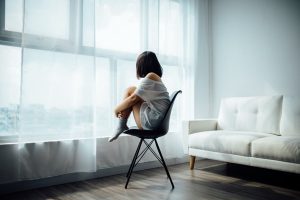
The outbreak of COVID-19 has been incredibly stressful for many people, resulting in feelings of increased anxiety and depression for some. Unfortunately, for those with pre-existing mental health conditions, the stress of COVID-19 can be too much to handle, leading to feelings of hopelessness and doubt.
Pacific Medical Centers recently launched a campaign focused on mental wellness during COVID-19, designed to foster connections during social isolation. PacMed knows that COVID-19 has led to a mental health crisis, both in Washington state and around the world. The team of mental and behavioral health providers at PacMed can teach us how to properly spot mental health concerns and the right questions to ask our family and friends who may be experiencing feelings of loneliness and isolation during COVID-19.
To help share further insights on how COVID-19 has impacted our mental health – and how Pacific Medical Center’s COVID-19 campaign aims to help those currently suffering from mental health illnesses — nurse practitioner Simon Katumu with Pacific Medical Centers’ can help. Katumu answers common questions about social isolation and its impact on mental health during COVID-19, along with the importance of understanding the connection between physical health and mental health.
Who is most at risk for depression?
Everyone can be affected by depression during this pandemic but most specifically, people that have had a prior history of mental/emotional conditions can be at a higher risk. This may include prior episodes of depression, anxiety, postpartum depression, etc. Also, people whose lives have been affected significantly by the pandemic such as job losses, losses of loved ones, experience with COVID-19 (such as being severely sick with the virus and being intubated in the ICU), etc. may also be at a higher risk for depression.
The economic impact of this pandemic has also affected us in one way or another, but some of us have been affected more than others. Also, people who are outgoing and derive energy from being around others may be affected by social distancing and the inability to go out and socialize. Those who consume news continuously, including social media, may find the information emotionally draining and depressing as well.
What specifically can readers do to avoid depression?
Try as much as possible to maintain your usual routine, which includes waking up at the same time every morning, exercising safely and regularly, eating healthy, getting enough sleep every night, limiting your consumption of the news / making sure your news sources are reliable and trying to stay in touch with friends and loved ones virtually, via FaceTime, Zoom, Skype, etc.
When should someone seek help?
If you notice that your emotions and feelings are affecting your ability to function and/or your relationships, then it may be time to seek professional help. Some people may notice that they are more irritable, impatient, not sleeping well, constantly worrying or being anxious about getting the virus, their financial wellbeing.
We all get concerned by what goes on around us and have thoughts and discussions about our jobs, families, the economy, and that’s perfectly fine, but there’s a level of nervousness, worry and uncertainty that is not healthy. When this happens, it is wise to seek medical help.
Why is it important to seek help?
Sometimes we go through life thinking that we are alone and no one else understands what we may be going through. We may think that we are the only ones who feel the way we do and maybe even think that something is wrong with us, but there’s help. Many of the issues that we face are also experienced by so many around us and there is professional help available.
Anything else we should know about depression during this time?
The brain just like all our other body organs can be sick. Just like there is no shame in seeking help for our hearts, livers and lungs, there is no shame in seeking help for our brains as well. It is perfectly fine and there is help available.
Parents Use Telemedicine to Get Daughter Life-Saving Care

Paying it forward: Physician’s mother was saved as a child by the same procedure
With stay-at-home orders in mind, many people are reluctant to venture out, even for needed health care. One family, however, learned firsthand that virtual visits—a new offering to keep medical appointments safe during COVID-19—are not only more convenient, but can also save lives.
On a Wednesday night this past April, 8-year-old Phoebe complained of not feeling well. She began throwing up. Her parents, Sara and Robbie, initially thought it might be her lactose intolerance acting up, thanks to recent quarantine dinners of pizza and ravioli.
“But every hour she kept vomiting,” her mother, Sara, said. “And I thought, Oh wow, she’s really got something.”
Sara stayed up with Phoebe through the night, posted near the bathroom. After a brief lull in early morning, they tried having Phoebe drink water, but the vomiting became worse and she began complaining of side pain. At 9:40, they decided to call PacMed.
PacMed Nurse Valentina heard the symptoms and, with extra stay-at-home precautions in place, immediately scheduled Phoebe for a 10 AM virtual visit. The family had never used the Zoom platform in MyChart (PacMed’s patient portal), so Medical Assistant Nyeelah called first and walked them through the technology. By 10:05, they were seeing the doctor, virtually.
“I’m glad they called and had the visit with us,” said Dr. Nawal Alkharouf, one of PacMed’s newest primary care physicians. “The alternative would have been a perforated appendix.”
Through the Zoom app on their computer, Dr. Alkharouf performed an initial assessment, including guiding the parents through a physical exam and asking clarifying questions to rule out similar conditions. “I tried to get her to do a jump test,” said Dr. Alkharouf, “to get up and just jump, but she couldn’t even get up. Just going from a laying to a sitting position was very difficult for her and she complained of pain. I could see on the camera that she was really guarding her right side.”
Based on the exam, Dr. Alkharouf suspected appendicitis, but there were a few atypical symptoms as well. With the added risks associated with exposure during COVID-19, the doctor wanted to be sure before sending them to the emergency room. So, she prescribed anti-nausea medicine, which the family picked up immediately. The doctor called them back 90 minutes later.
Phoebe was still vomiting, even on the medication, so once again, Dr. Alkharouf led them through a physical examination, with the parents’ assistance.
“She said, ‘Okay, you’re going to be my hands,’” related the mother, Sara. As Robbie held the camera up close to see Phoebe’s reactions, Sara performed the exam just as the doctor would have in the office, pressing down gently across Phoebe’s stomach to find the source of the pain.
They both noticed that Phoebe’s pain was more pronounced now on her right side—where the appendix is located—so they decided to bring her in to Seattle Children’s Hospital. After informing the hospital of Phoebe’s condition, Dr. Alkharouf called the parents back with details on the hospital’s COVID-19 visitor policy, as well as its valet service so Phoebe wouldn’t have to walk far.
After a wait (the hospital had to test Phoebe for COVID-19 before admitting her), she was cleared for laparoscopic surgery for her appendix later that night. When Dr. Alkharouf called the family in the hospital to follow up the next morning, Phoebe was already feeling better, keeping liquids down and enjoying Jell-O.
Looking back on the experience, Sara reflected, “The part I liked was using the camera like I did with the doctor. Phoebe could barely move, so if I had to go into the doctor to get it diagnosed, that would have been—torture for her.
“So, having her just lay on my bed and the doctor talking to us, just like we were sitting in front of her—that was really cool.”
Exactly 75 years earlier, another little girl was threatened by appendicitis, and a doctor took similarly innovative action at the time to save her life.
That little girl was Dr. Alkharouf’s mother.
It was in India, in 1945, before the country had partitioned into Pakistan, when the five-year-old began vomiting with abdominal pain and a fever. Her mother (Dr. Alkharouf’s grandmother) became very worried.
The only local hospital was British and was designated to treat only British military families in India. Still, the child’s uncle knew the hospital was their best hope. Against the odds, he biked to the hospital to plead with a doctor in person, saying she was only five and would die if they didn’t help her.
While it was against policy, the doctor was kind and agreed to visit the family in their home. After his examination, his face became grim. He told the family that the situation was dire, and she needed surgery right away. The family would later learn that the previous week, three British children had presented at the hospital with similar symptoms, indications of appendicitis. Sadly, all had died.
Immediately, they transported the young girl to the military base and operated—discovering that her appendix had already perforated. Nevertheless, they were able to perform a successful appendectomy. She became known around the hospital as “the miracle child.”
The hospital had a courtyard with a pond. During the girl’s recovery, the doctor would sit with her by the water. He taught her the ABC’s—her first exposure to English.
Rejuvenated and inspired by her introduction to this new world, that young girl grew up healthy and went into medicine herself. She became a family practice provider, married and started a family of her own. Her daughter, Nawal, would grow up and also become a physician, join PacMed—and save the life of young Phoebe the same way her mother had been saved.
“Seeing Phoebe made me remember my mom,” said Dr. Alkharouf. “I feel like it’s paying it forward, you know. Because if no one had saved my mom’s life, I wouldn’t be here. Not only that—they also inspired her and encouraged her; she became a doctor because of it. There’s a lot one person can do—sometimes we don’t realize our effect. Our words matter, our actions matter. They change lives, and we don’t always realize that.”
A few weeks after Phoebe’s surgery, PacMed called the family to check in. Phoebe was back to her normal self, facing the challenges of childhood these days. “Yeah she’s pretty active,” said Sara. “She keeps trying to do her math right now and she’s distracted, so I told her to run up and down the stairs, and move around.”
We shared the story of Dr. Alkharouf’s mother with Sara.
“That is very cool,” she said. “Since the surgery, we keep saying, Wow! We are just so thankful for medical care. Because if we didn’t have it”—she paused—“that would be awful.
“That would be terrible, just being in that much pain, and being able to do nothing about it. But the medical teams get it handled so quick these days, and help your child get out of pain.
“Yeah, it’s pretty awesome.”
You can schedule a virtual or in-person visit with PacMed by visiting doctors.pacificmedicalcenters.org, or by calling 1.888.472.2633.
Dr. Nawal Alkharouf provides care as a pediatrician out of PacMed’s Canyon Park clinic in Bothell.





